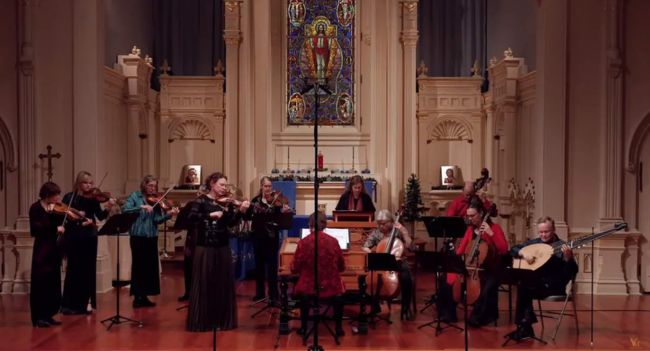Last week we featured a performance of Pachelbel’s Canon as faithful as possible to how Pachelbel originally composed it, as well as to the instruments and playing styles of the era in which he lived. Today we offer another performance by the same ensemble, San Francisco’ Voices of Music, this one of an even more beloved piece: Antonio Vivaldi’s The Four Seasons. In the video above, violinist Cynthia Miller Freivogel joins Voices of Music to play the suite’s “Winter” concerto on such genuinely early 18th-century instruments as the baroque organ, the Italian single manual harpsichord, and the archlute.
“Of the many composers who helped to bring the Italian Baroque style to its zenith at the beginning of the 18th century, Antonio Vivaldi stands out as perhaps the most creative,” says the web site of the Redlands Symphony. “Like Bach, his energy was primarily directed toward perfecting existing forms rather than creating new ones. Within the works of Vivaldi, we see a perfection of the 17th century Italian concerto and opera forms.”
And in the case of The Four Seasons, made up as it is of one concerto representing each quarter of the year accompanied by a sonnet on the spirit of that season, Vivaldi made “a conscious attempt to write programmatic works. They are, in fact, one of the earliest attempts to compose music of this type.”
For this video, Voices of Music’s official notes explain, a “new edition” of The Four Seasons “was prepared from the original sources, prints and manuscripts for Vivaldi’s music. In addition, a digital overlay has been created for Vivaldi’s sonnets which were inlaid into the original engraving: click the CC button to view the sonnet and the gear icon to choose your preferred language.” This performance of one part of Vivaldi’s best-known compositions, sounding as close as we can possibly get today to the way Vivaldi himself must have heard it, will be seasonally appropriate for southern-hemisphere Open Culture readers now in the middle of their own winter. As for readers in the summertime of the northern hemisphere — well, nine and a half minutes of 17th-century wintertime may be just what they need to cool down.
